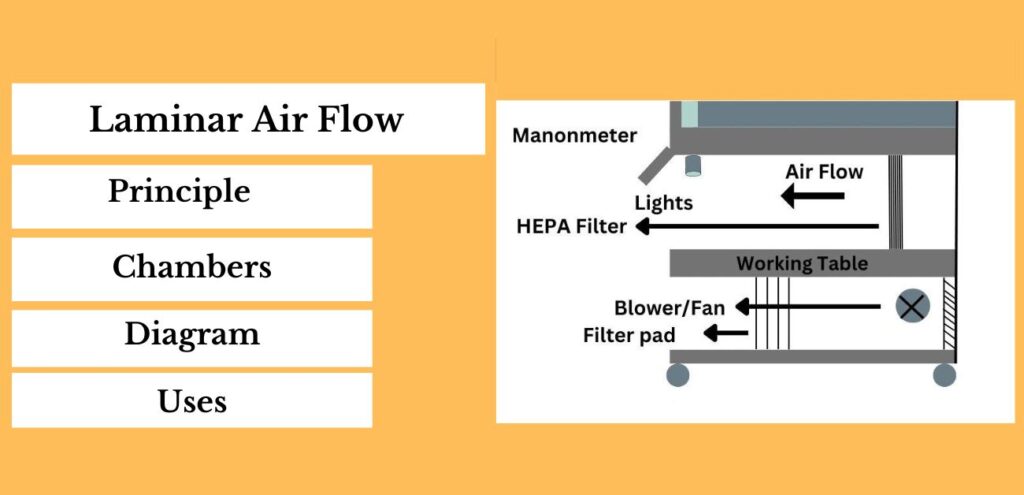A Fire hydrant is a connection point designed to give emergency services with quick and reliable access to water supply during fire. It is an important safety feature placed carefully in cities to guarantee quick response such as for firefighters in times of need.
In this article we’ll read what is a fire hydrant, its system, types of fire hydrant, and how close can you park to a hydrant along with its parking rules. Let’s begin.
What Is Fire Hydrant
A fire hydrant is a device connected to a water supply, typically located outdoors, designed to provide firefighters with quick access to water at the time of fire. A fire hydrant sprinkler is a network of pipes, installed within a building with sprinkler heads.
Now the question that comes to our mind is who invented the fire hydrant. Well, it was invented by Frederick Graff Sr., a prominent American hydraulic engineer. In 1801, he designed and installed the first successful and functional hydrant in Philadelphia.
Fire hydrant color code provide quick and visual information to firefighters about the water flow and pressure they can expect. There are different fire hydrant color code used for different water flow and purposes, such as –
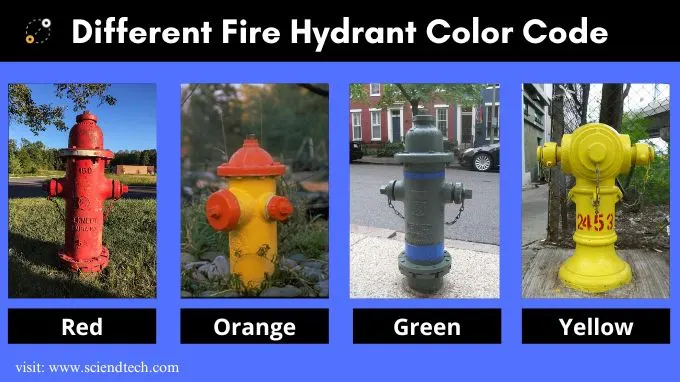
- Red fire hydrant – it indicates high-flow, exceeding 1,000 gallons per minute (GPM), commonly found in areas with basic water demand like commercial areas.
- Orange fire hydrant – it represents a moderate flow, ranging between 500 and 1,000 GPM, located in residential neighborhoods.
- Green fire hydrant – it signifies lower flow rates, below 500 GPM, and are commonly situated in less populated areas.
- Yellow fire hydrant – it indicates that the water comes from a public supply system. Some municipalities use a yellow fire hydrant for specific purposes, such as supplying water for street cleaning, construction, or other non-firefighting uses.
So we can see that a Fire hydrant is a really important device for us as it serves as crucial access points to pressurized water supplies for firefighters during emergency response and extreme fire situations like accidents. explosions, etc.
Recently, according to The Washington Post, a Sterling house explosion in Loudoun County, Virginia took place which resulted in the death of a firefighter and 11 injured people. The reason for the Virginia house explosion is still unknown.
However, according to the assistant chief of the Local fire department of Sterling, Loudoun County, James William, the house explosion took place after the Loudoun County fire and rescue workers were sent there regarding a report on a gas leak.
James William also said that the house explosion was heard for miles, debris flew into the woods and houses were shaken due to the force of the Virginia house explosion.
Fire Hydrant System
A fire hydrant system is an important component of fire protection infrastructure in buildings and communities. It is designed to provide a ready and fast source of water for firefighting emergencies.
A system installation consists of a network of pipes, valves, hydrants, etc. that allows firefighters to quickly connect hoses and access water at the time of a fire emergency.
Let’s learn about the fire hydrant system parts name one by one and what function they do –
Fire Hydrant Pipe
A pipe is one of the important parts of a fire hydrant system designed to provide a quick and reliable water supply for firefighting operations. The pipe serves to connect the hydrant to the water source, facilitating the efficient transport of water to hoses and firefighting equipment during emergencies.
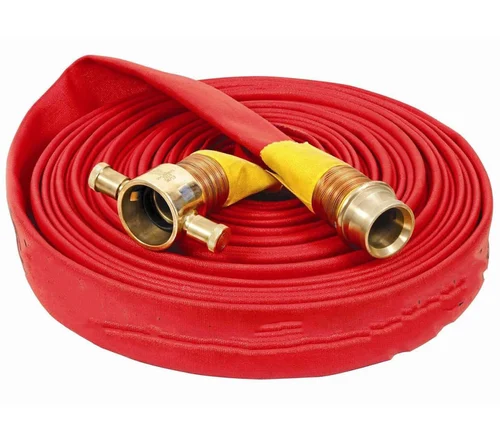
The underground piping, riser pipes, nozzle pipes, and outlet pipes collectively make up the fire hydrant pipe system.
Fire Hydrant Hose

One of the fire hydrant parts is the hose. A hose is a flexible channel designed to connect a hydrant to fire fighting equipment, such as fire trucks or hoses. The hose allows for the efficient transport of water from the hydrant to the location of a fire.
Fire Hydrant Valve
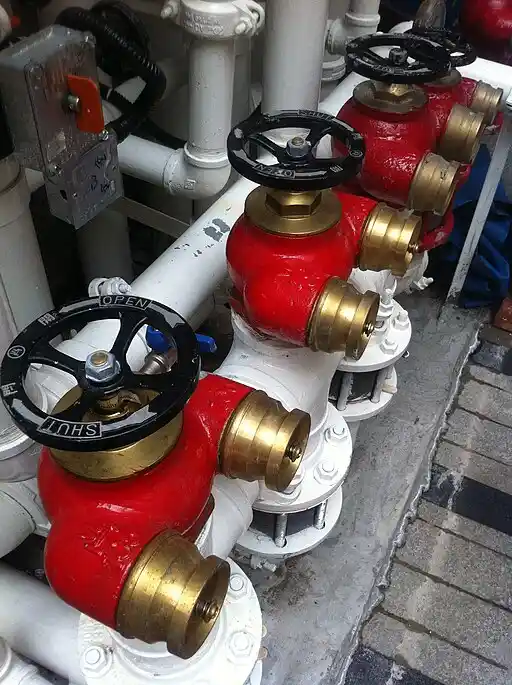
Other parts of a fire hydrant include a valve. A valve is a critical component of a fire hydrant system, and it acts as the control point for regulating the flow of water in firefighting operations. The valve is typically installed on or near a hydrant and is used to turn on or shut off the water supply to the hydrant.
Fire Hydrant Cabinet
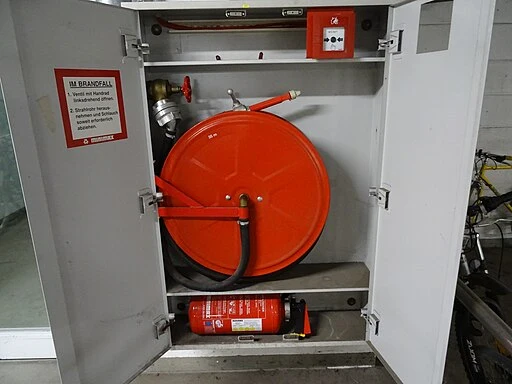
A cabinet is a box designed to protect other fire hydrant parts, such as fire hoses, nozzles, and other tools. These cabinets are strategically placed in buildings or other locations to provide quick access to essential firefighting gear in case of an emergency.
Fire Hydrant Wrench
A wrench is a specialized tool designed for the installation, operation, and maintenance of hydrants. It is one of the essential fire hydrant parts for firefighters who need to access and control water flow from the hydrants.
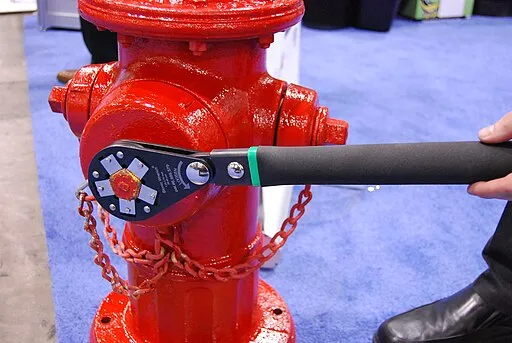
Fire hydrant wrench is a long-handled tool designed to provide support for turning the operating nut on a hydrant.
Fire Hydrant Pump
A pump, often known as a booster pump, is an essential part of a fire hydrant system. The purpose of a pump is to boost water pressure in the fire protection system, for an effective and reliable water supply during firefighting activities.
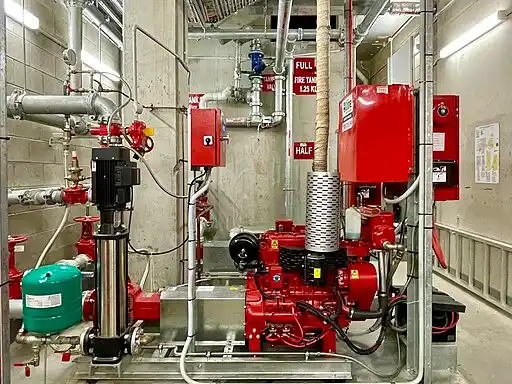
Fire hydrant pumps can be classified into different types, including electric pumps, diesel pumps, or jockey pumps.
Types Of Fire Hydrant
There are various fire hydrant designed for different purposes and environments. The selection depend on factors such as water supply, location, and specific firefighting requirements. Here are some common types of fire hydrant –
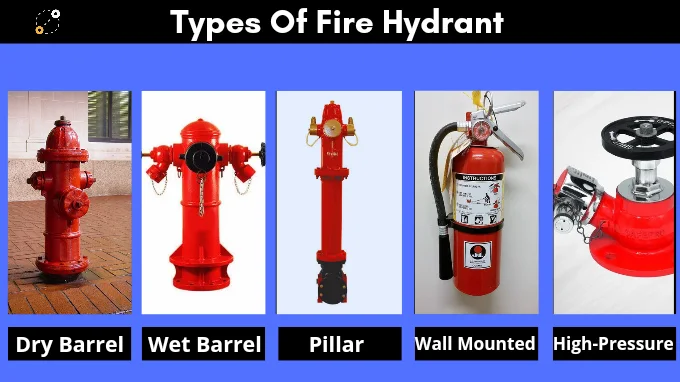
Dry Barrel Fire Hydrant
This is one of the common types of fire hydrant. It is used in cold climates where there is a risk of freezing. The valve is located below ground level, and when not in use, the water drains from the hydrant to prevent freezing.
Wet Barrel Fire Hydrant
Unlike the dry barrel hydrant, a wet barrel hydrant keeps water in the barrel above the ground. These fire hydrant types are suitable for regions with milder climates where the risk of freezing is lower.
Pillar Fire Hydrant
Pillar hydrants are standalone types of fire hydrant that are not sunken into the ground. This makes them easily visible and accessible, simplifying identification for both firefighters and the general public. They are commonly found in urban areas.
Wall-Mounted Fire Hydrant
These are the fire hydrant types that are designed to be mounted on a vertical surface, typically a wall or the exterior of a building. Wall-mounted ones are space-efficient and are installed in areas where there is limited space or where an above-ground one is not possible.
High-Pressure Fire Hydrant
These are the types of fire hydrant that are designed to handle water pressures higher than standard hydrants. High-pressure hydrants are used in areas where the water supply requires additional pressure.
Fire Hydrant Parking
Fire Hydrant Parking refers to the act of parking a vehicle in close proximity to a hydrant, blocking or limiting access to the hydrant. Parking in front of a hydrant is typically prohibited by traffic regulations.
Now how close can you park to a fire hydrant? Well, the parking distance from a fire hydrant can vary depending on local traffic regulations and laws. However, a common standard in many jurisdictions is that fire hydrant parking distance for vehicles should not be within 15 feet (approximately 4.5 meters) of a hydrant.
Unrestricted access to the hydrants is critical for firefighters to quickly connect hoses and access water during emergencies. Fire hydrant distance from parking should not be too close to a hydrant as it can significantly affect these efforts.
Fire Hydrant Parking Rules
Fire hydrant parking rules are established to make sure that hydrants remain accessible to emergency responders in case of a fire or other emergencies. Following are the fire hydrant parking rules –
- One of the important fire hydrant parking rules is that vehicles are generally prohibited from parking within a certain parking distance. The common standard is not parking within 15 feet (approximately 4.5 meters) of a hydrant.
- Fire hydrant parking rules also say that areas should have road markings or paint on the pavement indicating the no-parking zone around hydrants.
- Other parking rules include signs. Signs are often posted near hydrants to indicate the parking regulations. These signs may specify the minimum distance required for parking.
- Fire hydrant distance from parking should not be very close and is typically considered a traffic violation, and fines may be imposed.
- Hydrants need to be easily accessible to emergency responders. Fire hydrant parking distance too close can block access to hydrants, disrupting firefighting efforts.
- They should have emergency access. The primary goal of fire hydrant parking rules is to ensure that firefighting personnel can quickly and effectively access water sources in the event of a fire or emergency. Blocking hydrants can have serious consequences for public safety.
Conclusion
Fire hydrants are essential components of community safety, providing essential water access for firefighting. The fire hydrant system also ensures a reliable and accessible water supply for firefighters during critical situations. Obeying the fire hydrant parking rules is crucial to maintaining clear access during critical situations. These devices, with their color-coded division, form a crucial part of the infrastructure that protects lives and property in our neighborhoods.
Also Read :
FAQs
What is the purpose of a fire hydrant?
Its purpose is to provide firefighters with access to a reliable water supply in the event of a fire emergency.
What are the 2 types of fire hydrants?
Dry barrel and wet barrel are the two types of Fire Hydrants.
What is the principle of fire hydrant?
A fire pump draws water from an underground water source, a water tank, a lake, or a reservoir. It runs on electricity or diesel fuel.

